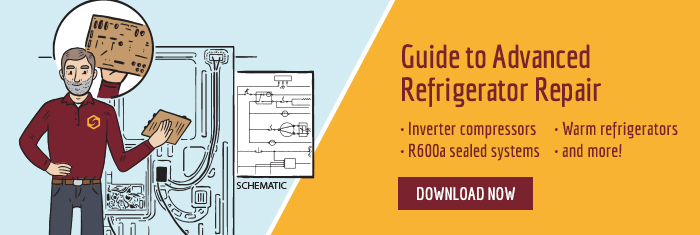The Master Samurai Tech Ten-Step Tango for Troubleshooting Appliances
Troubleshooting is the big missing skill among appliance techs today. This is the skill that distinguishes parts changing monkeys (PCMs) from Master Samurai Techs. It's the difference between a drunken street brawler making monkey jabs versus a trained MMA fighter making kill shots.
PCMs will thrash about wildly, monkey-jabbing at components hoping to get lucky and usually end up getting their asses kicked.
Anyone can monkey jab and the sad truth is that this is the dominant practice of the appliance repair trade today. It doesn't have to be that way. Anyone who wants to can learn how to make kill strikes like a Master Samurai Tech.
Master Samurai Techs don't rely on luck. They have a plan of attack, a strategy. They deploy precision kill strikes that have been honed in the Dojo-- training at the Master Samurai Tech Academy and in the Office Hours webinars-- and systematically dominate the appliance.
Whether you're troubleshooting a simple GE dryer with just a mechanical timer or a Sub-Zero refrigerator with a microcomputer board, multiple sub boards and two different compressor technologies, the troubleshooting procedure is the same. That's the Ten-Step Tango: a structured, disciplined procedure for solving problems.
In our Office Hours webinars, we've begun a series of workshops on the Ten-Step Tango, applying it to different troubleshooting scenarios on real-world appliances. We started off by introducing the Ten-Step Tango procedure and then applied it to simple appliances (no control boards, just mechanical controls, like timers). Then, in the next workshop, we kicked it up a notch and troubleshot appliances with multiple control boards, digital communications, hoodoo, voodoo, and all kinda weird stuff.
The workshop webinar recordings, along with all the other Office Hours webinar recordings, are available for Professional Appliantologists and Master Samurai Tech Academy students to watch at the links below:
Master Samurai Tech Academy Students: http://mastersamuraitech.com/webinar-recordings/
Mr. Appliance® Academy Bundle 1 Students: http://mrappliance.mastersamuraitech.com/appliance-repair-course-support/student-forums/forum/webinar-recordings/
Professional Appliantologists: https://appliantology.org/topic/58003-webinar-recordings-index-page/
The next workshop will be in January 2017 and will be announced here at Appliantology as well as in the MST-Appliantology newsletter.






4 Comments
Recommended Comments